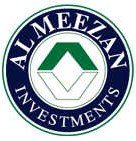| |
THE reign of the late Shaikh Zayed bin Sultan Al Nahyan inaugurated an economic revolution in Abu Dhabi after the discovery of oil in the 1960s transformed the emirate into one of world's quintessential womb to tomb petrocurrency welfare states.
Blessed with a geological lottery, the ownership of no less than ten per cent of the world's proven reserves of crude oil and natural gas, Abu Dhabi telescoped a process of development that had evolved over centuries in the West into the time scale of a single generation. An economy that relied on date farming and pearl diving fleets in the pre-oil era created sophisticated institutions and systems of governance to develop its oil resources and manage its tsunami of petrodollar wealth after the OPEC price bonanza in the early 1970's.
ADIA was the most successful sovereign money management agency in the Arab world, its impact on the global financial markets similar to Singapore's Temasek or Norway's Oil Fund with none of the corruption and scandal that traumatised the state investment agencies of Kuwait, Brunei and Libya. ADIA also acted as a catalyst for developing Abu Dhabi's human capital, contributing an entire generation of technocrats, bankers and fund managers to the emirate. ADNOC was also a critical institution that integrated Abu Dhabi into the inner sanctions of the West's chancelleries of power and corporate boardrooms, with its joint ventures and partnerships with the planet's leading oil companies.
Abu Dhabi has initiated the most ambitious programme of economic transformation since the 1970's. The threefold rise in crude oil prices has amplified the power and influence of Abu Dhabi, which generates more than 60 per cent of the GDP of the UAE and owns more than 95 per cent of its oil and gas reserves.
It is, of course, impossible for Abu Dhabi to abandon its tribal and Bedouin heritage in its quest to attract tourists or turbo charge its service sector. Yet the Culture Foundation, the billion dollar deals with the Louvre and the Guggenheim museums, the spectacular and luxurious Emirates Palace Hotel, has made Abu Dhabi a magnet for exclusive, high end tourism. While Abu Dhabi's OPEC quota and exceptionally well managed petrocurrency reserves has made it fabulously rich, a new generation of government planners are committed to diversify from the oil sector and create new industrial constellations and service industries. The fact that Abu Dhabi already earns more from its offshore investments than its oil and gas exports is a testament to the prudent yet visionary leadership of the ruling Al Nahayan family. The Abu Dhabi government has accelerated its economic reform agenda after the death of Shaikh Zayed in 2004. Municipal government has been restructured, new private banks and investment agencies have been created, technocrats in their 30's and 40's have been appointed chairmen and managing directors of Abu Dhabi's powerful plethora of state owned companies.
Abu Dhabi has an integrated economic template to attract foreign investment, build the world's largest aluminum smelter, float state assets in the capital markets, spawn new knowledge industries such as aerospace components and oilfield supplies, leverage its vast cash and energy resources to build high tech networks in the desert. Mubadala, Abu Dhabi's innovative foreign investment arm, owns telecom licenses in Nigeria, crude oil and gas concessions in Libya and Oman, a five per cent stake in Ferrari and joint venture deals to build everything from state of the art hospitals to universities with the crème de la crème of the global Fortune 1000. The Mubadala model leverages Abu Dhabi's oil wealth to nurture new businesses and economic hubs in the emirate, from aerospace technologies to aluminum and petrochemicals. The "cluster economics" that reinvented Dubai's model in the new millennium will now work its magic on Abu Dhabi.
Abu Dhabi has used its vast petrodollar reserves as an instrument of foreign policy since the establishment of the UAE. The late Shaikh Zayed invested billions in building dams, schools, hospitals, roads at his own expense across the Arab and Islamic world and established the Abu Dhabi's loans and grants also helped Pakistan, Egypt, Sudan and Morocco to avert sovereign default during the international debt crisis of the 1990's. Abu Dhabi established long term contracts for its oil and gas exports with Japan in the 1970's and China in the 1990's, making the two Asian economic superpowers the top lifters of its Umm Zakoum sour crude and the UAE's leading trading partners. Abu Dhabi has also used its vast defense budget, offset programmes and ADNOC joint ventures to forge strong diplomatic relationships with Washington, Paris and London.
While ADIA was a classic portfolio investor in the global financial markets, Mubadala has created active global partnerships infrastructure finance, high profile international energy projects and cross–border deals. With Total and Oxy, Mubadala owns 51 per cent Dolphin Gas project the largest intra–GCC project to support water desalination and power generation plants in the UAE and Oman. Its partners with Dubal and Sonantrach plans to build the Maghreb's 700,000 tonne a year aluminum smelter in Algeria.
Abu Dhabi's government agencies are matched by the global investment footprints of some of its private sector groups. Dhabi Group has taken controlling stakes in three Pakistani privatised banks and a telecom. Bin Zayed Group owns Salama Holdings, the world's largest listed Islamic insurance (Takaful) company. Abu Dhabi merchant banks National Investor and Gulf Capital are among the leading venture capitalists and LBO firms in the GCC. The world financial markets are going to hear a lot more from Abu Dhabi.
Matein Khalid is a Dubai-based investment banker and economic analyst
|








